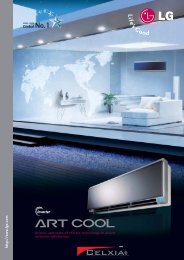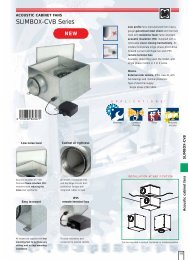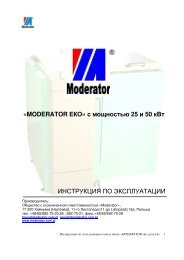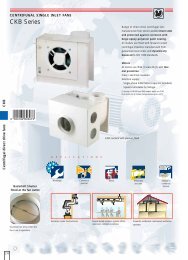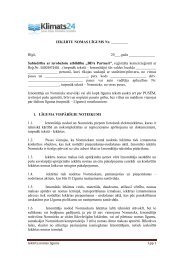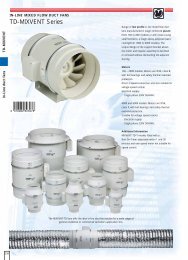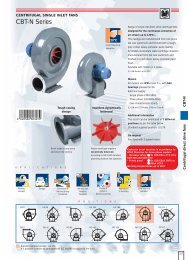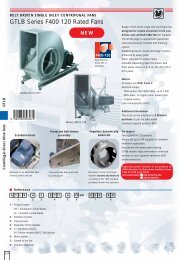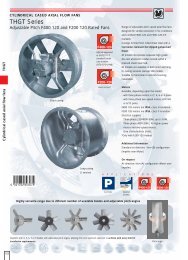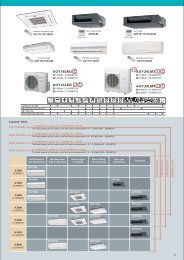NIBE F1330 - Klimats24.lv
NIBE F1330 - Klimats24.lv
NIBE F1330 - Klimats24.lv
- No tags were found...
Create successful ePaper yourself
Turn your PDF publications into a flip-book with our unique Google optimized e-Paper software.
Installation / AdjustmentDescription of functions - Basic functionsGas boilerIn those cases, additional heating is supplied using a gasboiler you can choose to connect it as an oil boiler if youneed to control a shunt valve or alternatively connect it asan electric boiler.See the section Description of functions - Basic functions> Electrical additional heater to connect it as an electricboiler and the section Description of functions - Basicfunctions > Oil boiler to connect it as an oil boiler.HPACNOTE!This system solution means that the brinewill also circulate through the heatingsystem. Check that all component parts aredesigned for the brine in question.HPAC can either be connected to the Base card or to theExpansion card 11. When HPAC is to be connected to theBase card the immersion heater can be run at a maximumon one step.Control of cooling mode takes place by means of anoutdoor sensor and, when connected, a room sensor (RG10/RG 05, see the section Description of functions - Basicfunctions > Room control for a description of the connection).The control of cooling to the house takes place accordingto the set curve slope and curve offset in menus 6.4.2 and6.4.3. After adjustment, the house receives the correctamount of cooling for the prevailing outdoor temperature.The flow temperature from HPAC will fluctuate around thetheoretical required value (value in brackets in menu 2.0).In the event of excess temperature, <strong>F1330</strong> calculates asurplus in the form of degrees-minutes, which means thatthe connection of cooling production is accelerated thegreater the excess temperature that temporarily prevails.<strong>F1330</strong> automatically switches to cooling mode when theoutdoor temperature exceeds the set value in menu 6.4.5.Passive cooling means that <strong>F1330</strong>, with the help of the circulationpumps, circulates fluid from the soil/rock collectorin the house’s distribution system and cools the house.In the event of a large cooling requirement where passivecooling is not sufficient, active cooling is engaged at thelimit value set in menu 6.4.7. A compressor then starts andthe cooling produced circulates to the house’s distributionsystem and heat is circulated out to the soil/rock collector.When more compressors are available, these will start witha difference on the set degree-minute setting in menu6.4.8.Three different cooling curves can be selected,see the figure for a detailed description.Calculatedflow temperature°C2015 c=1 k=110500c=2 k=2c=3 k=3 OutdoorUtetemp. temperature20 3040 °CIf room sensors (RG 10/RG 05) are connected, coolingstarts at a 1 degree excess temperature in the room andthe supply calculation counts on an outdoor temperatureof 30 °C (if the outdoor temperature is greater, then theactual outdoor temperature is used). When the room temperaturehas fallen to 0.5 degrees of excess temperature,the cooling is switched off. To prevent self-oscillation in theheating system, there is a neutral zone between heatingand cooling operations.Lower shunt (SV-V2) is regulated during cooling operationin opposite direction to heating operation, which normallymeans the shunt closes completely during cooling operation.The outline diagram with docking instructions isavailable at www.nibe.com30 <strong>NIBE</strong> <strong>F1330</strong>



